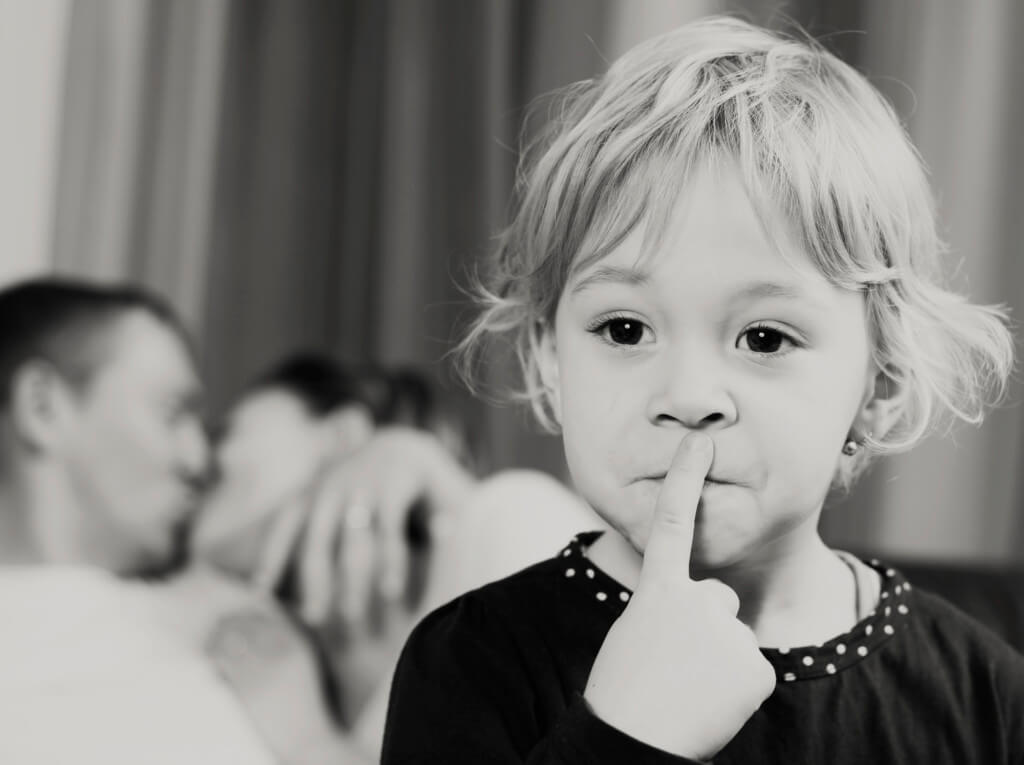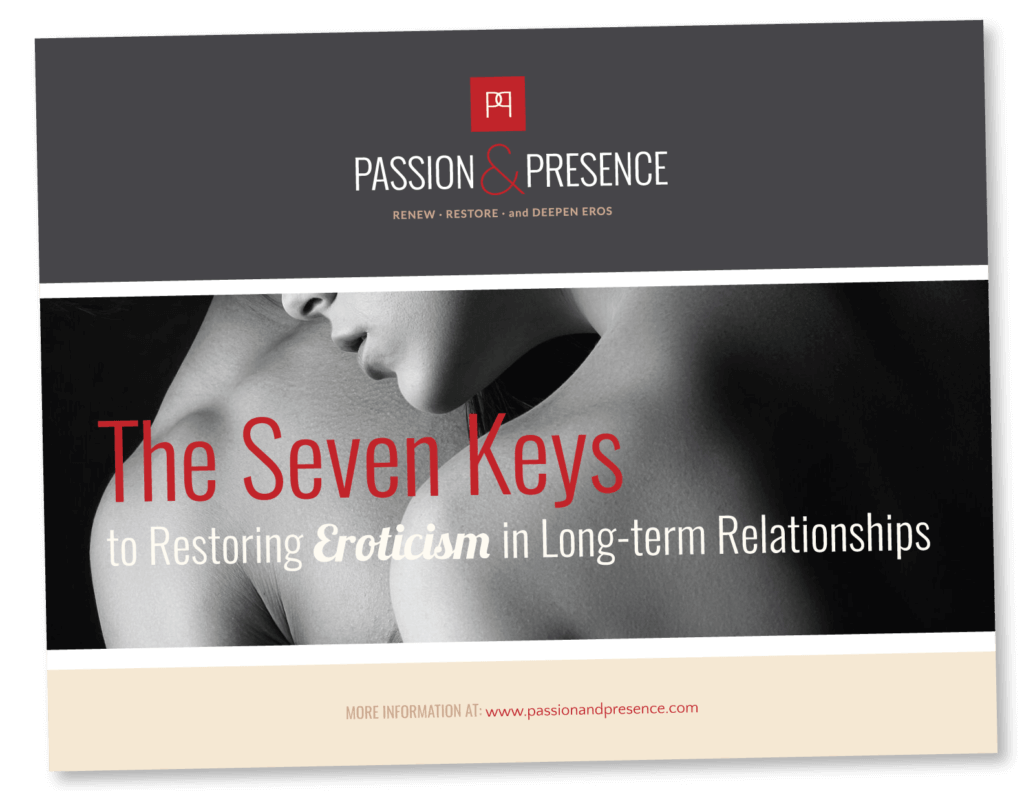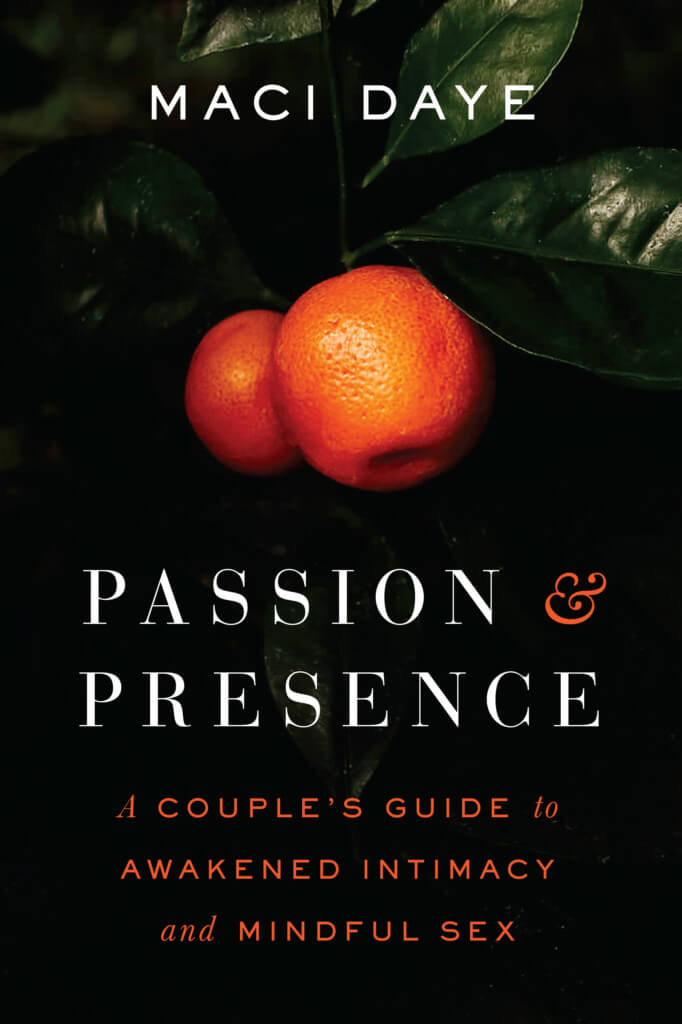As a couple do you wonder how to model healthy sexuality to your children?
There are many ways to educate our children about sex. One way is through our words and what we say about sex, but children learn even more enduring lessons by observing our behavior. Just as you learned about sex by observing how the people around you handled sexuality, your children are also taking note: Are you tight-lipped and awkward, or openly affectionate – even flirty with your partner? Do displays of affection from your spouse, particularly those coupled with a sexual innuendo, play out in front of your children naturally or get brushed off with an embarrassed swipe.
Of course, there is a danger of over-exposing kids to too much sexuality too soon, leaving them potentially flooded and overwhelmed. But underexposing children to sexual expression leaves children and teens vulnerable to shame-based secrecy and ignorance. As a committed, caring parent you want to honor the inner wisdom of your kids, and, as teens, support their blossoming sexuality. You may be aware of Sex Positive Parenting and you’ve probably read some great sex education books (perhaps Paul Joannides’ Guide to Getting it On).
And yet…we still live in a culture that is both fascinated by, and ashamed of, sexuality. In contemporary America, like partisan politics, sex is divided into explicit, anatomically fixated adult porn on one side and hidden, shame-based sexuality on the other. This leaves a gap where expressive, relational sex is severely under-represented. While you may have worked hard to transcend this culturally created divide for yourself, you may be perpetuating this gap as a parent by hiding loving, playful expressions of love and desire from your children.
What About Me?
On one hand you may want to remain fully expressed, passionate lovers with your partner or spouse, as you were before you had children. On the other hand, you probably have little-to-no family modeling about how to do this, and fear that carrying on like you did before the children were born would over-expose your kids to sexuality, violating boundaries and privacy.
There are so many reasons why passionate, hot sex can become a distant memory once kids come along. One reason is that mothers in particular find it harder to be fully relaxed or present during lovemaking as they remain hyper-vigilant to cries from their newborns.
This can certainly kill the moment. Yet in my experience, parents rarely want to model a sexually anorexic way of relating, but many carry this legacy from their own parents by exiling sexuality from the house. This is why we may still have a hard time thinking about our parents as sexual beings, even though clearly they must have had sex to conceive us.
Today, there are lots of opinions, but little consensus regarding what kinds of boundaries parents should uphold around sex. With freedom to make up your own rules comes the responsibility to use this freedom wisely. Given the demands, roles, and responsibilities of being an adult and a parent, as well as concerns about having enough privacy once children are around, many couples end up on the sterile, undersexed side of this parent sex divide.
The divide shows up in kids as well: Many teens learn a lot about “spectacle sex” from adult porn available on the internet , but often remain spectacularly uninformed about how to give and receive real pleasure, and how to avoid STDs and unwanted pregnancies. Given these gaps, it’s not surprising that notions of what is acceptable and appropriate in terms of how to model healthy sexuality as a parent can be deeply divided.
Experiences of Boundary Extremes
The Passion and Presence Team compared notes on what was modeled to us as children and teens. One of us had a very controlling father who attempted to ban the sexuality of his teenage daughter. Her mother, at the other extreme, was accepting, even encouraging of sexual experimentation, which she modelled herself. She invited her daughter to speculum parties with adult women, which was overwhelming in its own way. As an adult, this daughter experienced a lot of confusion and distrust of sexuality, which often occurs when either side of the gap becomes polarized against its opposite.
Shifting Perspectives on Privacy
As a young woman, I personally experienced being interrupted during lovemaking by both the mother of one lover and the child of another In both instances, I was mortified, while they appeared non-plussed. In fact, I can still hear the eight-year-old girl reporting, “They’re just screwing” to her curious four-year-old sister. Clearly, her parents were bridging the sexual gap and their children did not appear to suffer any short or long-term damage.
An Outside-In approach would suggest that clear boundaries around privacy had been crossed. But history, archeology, and anthropology tell us that sex has not always been a private affair. Jeremy Rifkin describes how in the West sexuality shifted from the public to the private arena only after the Middle Ages. The idea of the individual–and thus the notion of individual privacy–did not emerge until the 16th century, fostered by changes in living arrangements in the early modern era. Only recently has it become common practice for a couple to sleep in a bed together behind closed doors and in a separate room.
So, given the absence of absolute answers, how can we model healthy sexuality for our children, and draw appropriate sexual boundaries for them? And how can a Mindful approach help?
Mind the Gap
“Mind the Gap” is something you will hear any time you travel in Britain, to prevent passengers from falling between the sometimes yawning gap between a train and the platform. “Minding the gap” works just as well to describe the approach that parents can take to establish guidelines regarding their own sexual boundaries and behavior.
Mindfulness of the gap allows us to transcend apparent opposites. Non-judgmental awareness is more than a rickety rope bridge between one side and the other. With mindfulness we can calibrate to what is happening in the moment and avoid divisive binary thinking that is imposed from the Outside In. This form of “skillful means,” as the Buddhist’s call it, is a dynamic process of letting our internal wisdom be informed by our current circumstances, rather than establishing binding one-size-fits-all rules.
Honoring the Insights from Within
As we honor the insights from within, they enable us to set and recalibrate boundaries with ourselves, our partner, and our children, in the present and over time. This allows us to be in the ever-shifting sweet spot of openness. For example, children of a certain age can accept that on Saturday mornings a closed bedroom door means their parents are having “Special time together” and are not to be disturbed. If your older child or teen gets embarrassed when you and your partner embrace, consider doing it less often for a while or use this as a chance to explore your child’s feelings. It’s perfectly fine to say, “I find your mother/father so attractive, I just want to hug and hold her whenever I get the chance.”
This allows both parents to be more than “mom” or “dad” to their children and to themselves, so that they don’t unwittingly over-identify with the sexually anemic and chaste roles of “the good parent.” So, go ahead and learn from history and the experts, but also cherish the insights, boundaries and ways of being around sexuality that emerge from within.
Recover a Sense of Playfulness
Because mindfulness allows us to recover a sense of aliveness through being fully present, playfulness often returns too. One of the healthiest insights I’ve seen from parents who have worked with mindfulness is that of letting their kids know that adults express their love, affection, and appreciation in physical ways, and and play their own games with each other. They make sounds of pleasure and delight, just as children squeal when they are having fun or are tickled. They make growling sounds together just like children do who are mimicking tigers and bears. They wink at each other, hold hands and hold each other when they need comfort, and they kiss and touch in ways that are different from how they kiss and touch their children.
Mindfulness has so much to offer us when modeling healthy sexuality for ourselves and our children. We can interrupt the legacy of shame we may carry from our parents and close the gap by instilling a sense of appreciation for sexuality in our children– possibly for generations to come.
Have you been able to draw healthy and appropriate boundaries around sexuality for your kids while remaining fully erotically expressed as a couple?
What are your thoughts and experiences?
To find out more about reviving intimacy as a couple and enjoying passionate sex again, visit here.
Recommended Resources
Jeremy Rifkin, The Empathetic Civilization, 2009. Jeremy P. Tarcher













